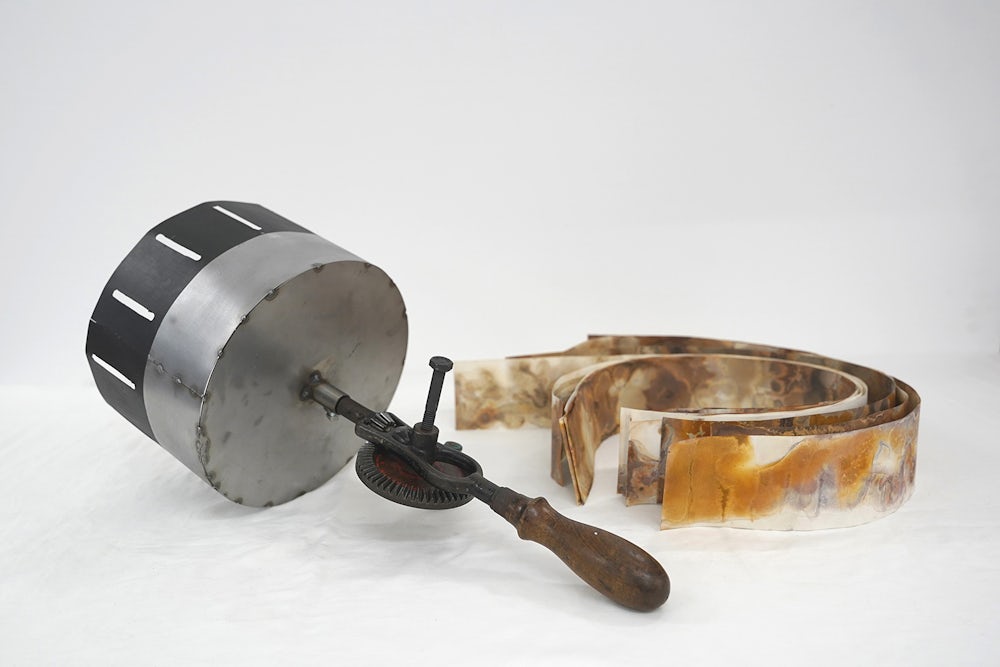Revolutions of the River Lea invites viewers to reconsider the boundaries between land and water, challenging the rigid dichotomies imposed by colonial mapping and industrial infrastructures. A zoetrope reanimates the fixed photographic method of soil chromatography, where the soil becomes its own medium. Together, these elements explore the lost connection between land and river at Cody Dock, a site where industrial embankments have physically reinforced the separation of the two. The project exists at the intersection of site, media, and device, constructing an alternative narrative that embraces "wetness"1's complexity and foregrounds life systems' interconnectedness.
The division between "dry land" and "wet river" has long been reinforced through both two-dimensional mapping and three-dimensional infrastructure. Creatures of the Lines2, a film by artist Sonia Levy and environmental anthropologist Heather Swanson, critiques the construction of canals as tools for colonial control. Architect and planner Dilip da Cunha similarly interrogates the power of designed lines, advocating for mapping methods that engage with more fluid representations of wetness3. Philosopher Bruno Latour, in his critique of rigid cartographic practices, argues for "figures accordées"—agreed-upon figurations—rather than static base maps. Revolutions of the River Lea contributes to this discourse by unpicking and redrawing the imposed boundary at Cody Dock, offering an alternative map that represents life as a dynamic and interwoven system.
Inspired by artist Steffie de Gaetano's Permeance4 and scholar Melody Jue's exploration of "saturation"5, the project challenges the traditional approach to soil chromatography. Mixing multiple soil samples dissolves distinctions between land and water, creating an image that resists fixed categorisation. The zoetrope6—a 19th-century optical device—further destabilises static representations, transforming chromatograms into "moving images" that question the very notion of a fixed landscape.
"Revolutions" references both the era of great damage of Cody Dock and the cyclical nature of reanimation. It signals both physical motion—the turning of the zoetrope—and conceptual shifts in how we perceive wetness. The act of exposure, revealing hidden realities as artistic and scientific artefacts, confronts environmental harm. In exposing fragile ecological states, Revolutions of the River Lea underscores the urgency of reconsidering past and ongoing damages that threaten futures.
1Da Cuhna, Dilip. The Invention of Rivers: Alexander's Eye and Ganga's Descent. University of Pennsylvania Press. 2018. 2Levy, Sonia. Creatures of the Lines. 2024. Trailer available at: https://sonialevy.net/cotl. 3 Da Cuhna. The Invention of Rivers 4Latour, Bruno. Foreword: How to Fight About Space in Terra Forma: A Book of Speculative Maps. MIT Press. 2022. 5de Gaetano, Steffie. Permeance Project. 2022. Available at: https://steffiedegaetano.net/permeance-project.html. 7Jue, Melody. Saturation: An Elemental Politics. Duke University Press. 2021. 6Zoetrope Animation explained. Adobe. 2022. Available at: https://www.adobe.com/uk/creativecloud/animation/discover/zoetrope-animation.html.









